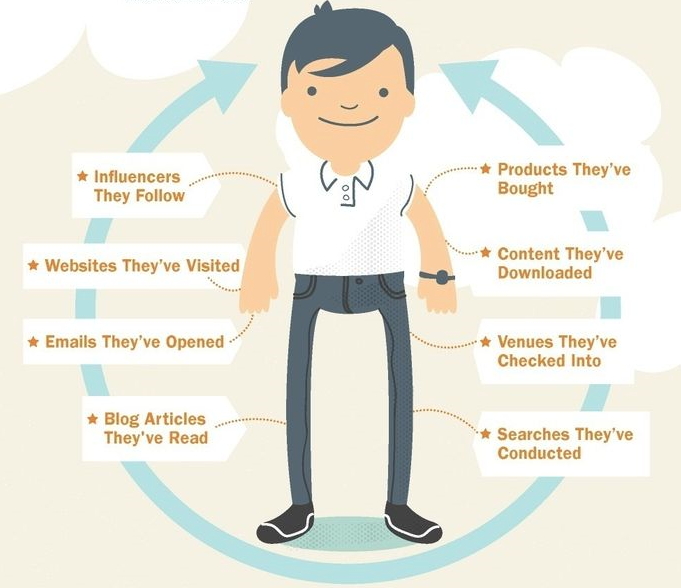Photo by Nicholas Green on Unsplash
Websites or any other web resources are designed for two purposes- for marketing of any services that a firm provides or for providing those services itself; partially or completely. In both the cases, understanding the key features of your target audience is a must. As a web designer, one must clearly able to answer certain questions such as- Who are your customers? Are they scattered among different age groups or they are a bunch of particular age group people? Why should they refer our website? What will they get out of it? What is the general taste of your target audience? What type of designing is considered ideal for them? Do they like innovative and out-of-the-box techniques or some plain trustworthy simple and sorted design would work for them?
On answering all the above questions, it will clearly provide a picture of web design in front of the designer. Let us consider this process of designing for the target audience as a series of below given steps.
Step 1: Identify your target audience
.jpg)
Narrow down the spectre of people that you wish to target. Remember one thing loud and clear- Never play with generics. Whenever you generalize your audience, your design will be porridge of a number of elements placed on a huge plate. Instead, as a designer, you should always try to provide a personalized touch to your audience. If someone feels that this thing is especially for them, they will be much more interested in the same.
Identifying your target audience can be carried out by conducting surveys, studying past statistical records or by mere knowledge of the product. For example, if you are designing for a firm selling body lotions, we can determine what kinds of people normally use it the most? Out of 100 people buying the body lotion, what is the proportion of each sector of people? Who use it more- kids, ladies, men, boys, old people or some other class of people? Well, here, we cannot design for all the 100 people using this body lotion, but we can definitely focus on the section which holds a clear majority. This not only makes the customers have a personal touch but also increases the sale among that sector of the audience.
Step 2: Understand your target audience

After proper identification of the target audience, our following step is to understand what we just identified. Well, as a graduate, I might not know what mid 40s ladies like! Isn’t it? Here comes the role of a designer again. If I have identified that my body lotion is particularly used by ladies around their middle 30’s to 40’s, next step is to get to know what they like and what they don’t. What kind of an environment pleases them? Would they be happy if some funky colours are presented to them or they would be more delighted with a clean combination of two colours well-coordinated with each other? Do they like to talk about parties or late night clubs or they are better off with family gossips?
This step is basically important to decide what kind of theme to incorporate in your website. For example, if I discover from the above questions that my target audience doesn’t like overstocked parties, I would keep a theme that is more based on daily house chores rather than outside fun. Hence, this again helps in giving a personal touch to the web design. Moreover, one can better understand their target audience by keenly observing their actions and responses to a particular situation because simple surveys wouldn’t be enough for the same. You can’t determine if your client would like blue or red by simply asking them; you can easily get to know so by giving them two dresses of blue and red colour each and asking them to pick one! Correct?
Step 3: Determine and create samples or prototype for the web look and feel by extracting and studying results from step 2.

Following step 2, we proceed towards actually starting the work after enough analysing of the set up and the background. Based on knowing our target audience’s choices, likes, dislikes and preferences, we must select the font style, colour, content layout and the content of our website. In brief, we must layout the presentation of our website and place all the elements of it on the screen. Moreover, we should finalize on a theme and look and feel of the website and make sure it goes with the research carried out in step 2. Amalgamating both, the audience’s liking and your design theme, if they synchronize, it will be a sure shot pathway to success.
Step 4: Evaluate your design and get reviews from your designing team.

After deciding upon the design and creating prototypes, always try to analyse and evaluate your design. The best way to do so is putting you in the audience’s shoes. Well but, that is not possible always! Hence, we can do so by sharing our designs and prototypes with other mates in our designing team and also outside that. We can get feedback from them and also keep a note of points discussed by them. A loop of revising the design accordingly for a number of times and then finalizing the best design will help a designer perfectly blend the customer’s expectation into his design.
Step 5: Internally study about the firm for which you are going to design and connect the company portfolio with the focused target audience.

After focusing on the customer’s side enough, our next step is to deeply understand the firm for which you are designing. Understanding the goals of the organisation, its working pattern and its final moto behind deploying themselves over the web will surely help to bridge the gap between the customer and the firm by creating a pathway in the form of a website. Deep and tough to digest this step and might seem unnecessary at times, in fact, it is a vital and key step before actually designing or coding the website.
Step 6: Deploy the design

After truly and thoroughly analysing all the minutest of details and keeping the design too ready, the obvious next step is to put that design down on your code. This step ensures that what you thought of and planned is actually put down. Not only this, coding your design completely with the actually content, images and the data and not the dummy ones will ensure proper functioning as it can be tested and corrected wherever found to be incorrect. Hence, this step should be accomplished well before deadline as it takes a huge amount of time to deploy and test. The simple reason behind this elongated time period is the number of iterations required for the testing and deploying phase.
Step 7: Improvise the design timely with respect to the changing trends.

Change is inevitable, and so should be the designing. Improvised designs are always appreciated and catch new crowd too. Once should always keep a track of the latest news and updates and keep on updating the design with respect to the changing tastes of their target audiences. This maintains the balance between the flavours of the company, audience and the design itself.
In a nutshell, designing for a target audience is a new way to proceed with the web design. One can always follow this way as a replacement to the traditional designing methods. This ensures more wholesome success.